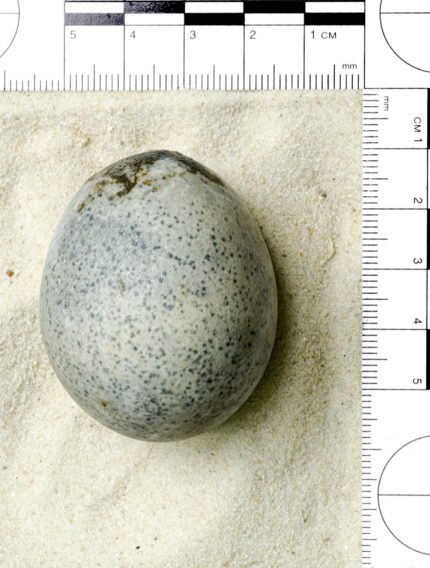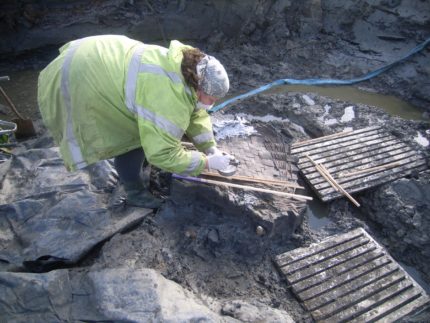 A CT scan of the Roman chicken egg discovered in Berryfields, Buckinghamshire, has revealed that it isn’t just the shell that is intact, but the contents — yolk, whites, and air bubble — are still inside. That makes it the only known example in the world of an ancient chicken egg that is complete with its interior liquids.
A CT scan of the Roman chicken egg discovered in Berryfields, Buckinghamshire, has revealed that it isn’t just the shell that is intact, but the contents — yolk, whites, and air bubble — are still inside. That makes it the only known example in the world of an ancient chicken egg that is complete with its interior liquids.
The Berryfields site was excavated between 2007 and 2016 in advance of the construction of new a housing development. The fieldwork uncovered evidence of human occupation going back to the early Neolithic period and extending into the early Modern era. The site saw significant activity in the Roman era, and in a waterlogged pit dating to the 4th century, archaeologists found a wealth of organic remains including leather shoes, animal bones and a woven basket containing four eggs. The ancient eggs were so fragile that three of the four disintegrated on contact, so the last egg standing became the only intact Roman egg ever found in Britain and the second ever found anywhere in the world.
The only other Roman-era egg to survive intact was found in a child’s grave in the Vatican necropolis under the via Triumphalis in Rome. The child, a baby who was less than a year old when they died between 50 and 150 A.D., was buried with a chicken egg in the right hand. The shell was intact but it was empty. It was probably not a food offering because at this time food offered for the deceased were usually pourable liquids like milk, honey and wine that were used in the burial ritual. Archaeologists believe it was symbolic, that the egg represented rebirth after the tragically premature death of the baby.
 Researchers have recently undertaken a new examination of the Berryfields egg, subjecting it to a microCT scan at the University of Kent. The scan clearly exposed the liquid interior with an angled air bubble at the top.
Researchers have recently undertaken a new examination of the Berryfields egg, subjecting it to a microCT scan at the University of Kent. The scan clearly exposed the liquid interior with an angled air bubble at the top.
The egg has also been taken to London’s Natural History Museum, where Douglas Russell, senior curator of the museum’s birds’ eggs and nests collection, and his colleague Arianna Bernucci were consulted about how to conserve the egg and remove the contents without breaking it.
Mr Russell said: “There are older eggs with contents – for example, the [museum] has a series of mummified birds’ eggs, probably excavated… from the catacombs of sacred animals at Denderah, Upper Egypt in 1898 which may be older.
“However, this is the oldest unintentionally preserved avian egg I have ever seen. That makes it fascinating. “Going forward, it will be very exciting to see if we can use any of the modern imaging and analysis techniques available here at the museum to shed further light on exactly which species laid the eggs and its potential archaeological significance.”
Mr Biddulph said: “As we found out when we visited the Natural History Museum, [it] appears to be the oldest known example in the world.”
Scrambling eggs is not a solution! 🐤️🐥️🐣️ – Indeed, “Millennium eggs” are a Chinese egg-based culinary dish. The recipe likely came about through the need to preserve eggs during ages of plenty by coating them in alkaline clay. The clay hardens around the egg and results in the curing, instead of spoiled eggs.